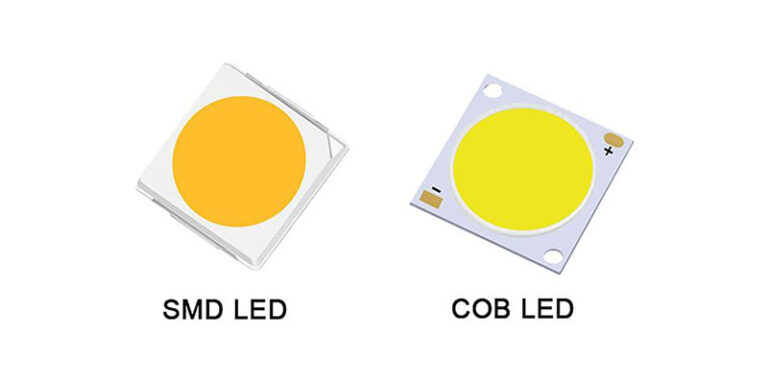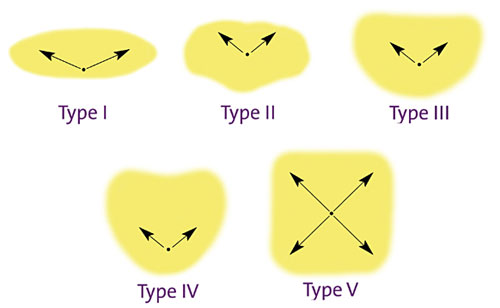Every day, a better and improved solar technology is being researched to effectively harness the sun’s energy.
The current solar technologies aren’t as efficient as we want, particularly as regards the solar panels used. Currently, there are just 2 popular types of solar panels, in spite of their inadequacies we need to know what each of them offer and how you can benefit from either one in your next solar purchase.
In this post, we covered extensively 2 types of solar panels. At the end you’d get to know their characteristics and compare both to help you in making the right decision.
Let’s get to it…
What are the Major PV Solar Panel Technologies?
There are different types of solar panel available today in the world and new ones are constantly being developed to ensure the inexhaustible energy of the sun does not go untapped.
The first of all solar cells ever created is the monocrystalline cell which was discovered in 1935 by Calvin Fuller and Gerald Pearson. This solar panel is by far the most developed of all solar panel technologies that could be employed.
Next is the arrival of the cost-effective polycrystalline cells which also has ever-since being improved.
There are other technologies such as the thin film solar panel which is suitable for regions with high temperature. In this article we shall stick with the most developed solar PV technologies. Which are the polycrystalline and the monocrystalline PV technologies.
What is a polycrystalline solar panel?
Polycrystalline materials are materials made out of several crystals (rocks) of silicon.
All crystalline PV panels are made of silicon. Scientists say it is the second most abundant element on the earth crust. Silicon is obtained from rocks and at all times it is found in its combined state as silicon dioxide.
How polycrystalline panels are made?
The process of making a polycrystalline PV panel can be quite tasking.
It starts by first extracting silicon from the rock by means of a very hot furnace of over 2,000oC. The furnace melts the rock into liquid, and this is then poured into a cooling machine. The result of this cooling is a pure silicon rock which is ready for processes to become a PV panel.
Silicon in its pure state is just a semiconductor which does not conduct easily because of its atomic structure. A material conducts when it has free electrons or free holes, but pure silicon does not have any. However, this can be improved by adding impurities to this silicon. The process whereby impurities are added to a pure element is called doping and the added elements are called dopants.
The dopant and the silicon rocks are mixed in a 3 ft x 3 ft square-shaped mold and the mold is inserted to a large furnace of temperature of about 2500oF. The mold stays in the furnace for about 20 hours for a proper melting process. It is removed after this period and allowed to cool for a day or two.
After the cooling a solid silicon block (ingot) is obtained. This ingot is sliced into a thin and fragile square shaped solid called wafer.
There are two stages when it comes to cutting an ingot; the first stage is where the entire solid is cut into a column of the required size but a very long width and the second stage is where the width is removed by cutting the column into the desired thin sheets -the wafer.
Though we’ve obtained the wafer the process is yet incomplete, unless the thin sheets are carefully collected and separated for the cleaning process.
Due to the fragility of these solids, hands are used to separate the solids individually and since hands are involved our material becomes more prone to contamination, because of this the wafers are washed properly after the collection.
Lastly is the addition of the last chemical unto the already washed wafers, this is then baked to obtain a fusion of the two materials.
Other finishing touches will be; addition of anti-reflective clothing on the panel, addition of chemicals to help the panel to better conduct electricity out of the panel, addition of aesthetic value to make it more visually appealing and addition of electrical contacts to help convey out the converted electricity.
What is a monocrystalline solar panel?
It is called monocrystalline because of how it is made or more appropriately, how what it is made from i.e. it is made out of a single crystal (of silicon).
How monocrystalline solar panels are made?
Unlike the polycrystalline panel which is gotten from many silicon crystals obtained melted and directly cooled, the production of a monocrystalline panel involves a more complex process ‘the Czochralski Growth’
After obtaining the silicon rocks from its parent rock, it is melted in something like an enclosed flask called the ‘Czochralski Growth Apparatus’. This flask has a heater in its innermost layer with a graphite bowl that contains the silicon rocks. The innermost layer is succeeded by another layer called the heat shield located in a space called the chamber.
Once the silicon is melted, a certain material called the ‘seed crystal’ is dipped into fluid and is pulled back up while rotating. The seed crystal continues to rotate as it moves up, while the graphite bowl simultaneously lowers itself, thus creating a solid cylindrical ingot of silicon around the seed crystal. The ingot might be larger than the desired diameter, but it can be trimmed to a desired size.
Large-sized ingot would not do us any good. Therefore, the ingot is sliced into thin layers using a 100-200-micron thick high-grade steel wire connected to rotating rollers cuts the ingot into roughly-surfaced wafers. To remove the rough surfaces several wafers are lapped on both sides in between to counter-rotating pad, this is called ‘lapping’. Though lapping helps to smoothen the surface of the wafer, it degrades the crystal structure of the silicon surface of the wafer. However, a process called ‘etching’ is employed to restore this and improve the crystal structure. Etching is done by immersing the wafer into any suitable etchant such as; KOH or HF.
The surface of the panel is then polished using an ultra-fine slurry to obtain a smooth wafer.
Having discussed how the various Crystalline panels are made we have a good ground to discuss the major differences between them. As we move on we would consider different points in analyzing the two types of technology.
Monocrystalline VS Polycrystalline Solar Panels
In the previous sections, we have gone through all of the processes required to make a crystalline solar panel, we shall proceed to analyzing several points that must be considered in placing proper value on each solar panel.
At the end of this section, you would be able to identify what solar panel is best for you based on their characteristics.
● Appearance Difference
How the different panels are made contributes to how they eventually look.
For instance, the monocrystalline panel is made out of a single crystal of silicon and thus it has a uniform color throughout the entire material. Whereas, the polycrystalline panel would have varying color differences across the entire material due to the fact that its ingot is gotten from several crystals of silicon.
Most times monocrystalline panels are black or dark blue in color and each cell (finished wafer) has a rounded edge. Do not forget that we have seen that the ingot obtained from melting the silicon rocks looks like a rounded cylinder and thus the individual wafers originally are rounded and needs to be cut into square shape to meet up with the required standard, but this would waste a whole lot of the monocrystalline silicon.
Therefore, it is then cut so that, part of the rounded part of the circular wafer does not waste. Hence, the reason for its rounded edge.
Polycrystalline panels have a bluish color and appears as though there are particles (looks more like rocks) are present inside the panel. Each cell has a square shape because it was cut out of a square shaped ingot.
● Module Convert Efficiency
How efficiently the panels would be able to convert solar energy into electricity greatly depends on the molecular structure of each material.
The monocrystalline panel because of its consistent make-up allows electrons to flow freely, but the polycrystalline would not as much as a monocrystalline panel would owing to the same reason of molecular structure. The conversion efficiency of the monocrystalline panel is from about 15% to about 20%
● Temperature Factor
The conversion efficiency of the panel also depends on the temperature, such that an increase or decrease in temperature above a threshold of 25oC causes an increase or decrease in the efficiency of any of the panels (be it monocrystalline or polycrystalline).
However, how much temperature affects the efficiency of the panel (temperature coefficient) varies between different brands e.g. a certain type of panel may have a temperature coefficient of about -0.123% per oC which means for every increment of 10C the efficiency reduces by 0.123%.
It has been observed that generally polycrystalline panels can withstand more heat than the monocrystalline panel
● Shading Factor
No solar panel works well when it is completely shaded. However, because of some particular reasons the monocrystalline panel functions better in cases where there’s no extreme shade.
● Cost
The monocrystalline panel costs more than the polycrystalline solar panel. This is due to the cost of producing the mono panel which costs approximately 20% more than the cost of production of polycrystalline panel.
The cost of production of mono panel is more of a function of the wastage procured during the reduction of the shape of the ingot to a rounded square shape.
● Space Efficiency
If you need a panel that efficiently converts and you’re willing to trade cost for space, the monocrystalline panel is your best bet. Though it’s not impossible to get polycrystalline panels of the same efficiency as a mono, but since the conversion efficiency of the polycrystalline panel is less one would need a large poly to match the required efficiency.
So, for less space and great efficiency the monocrystalline panel works well.
Conclusion
Let’s look at a summary of what was explained through this post, you can choose based on your need.
| Pros | Cons | |
| Monocrystalline PV panel | They have very high conversion efficiencyThey also have high space efficiencyThey perform better in shady places than a polycrystalline panel would. | They are very costly to produce and to purchase |
| Polycrystalline PV panel | They have a relatively low cost of production and hence, are cheaper to purchaseThey have proved to have more heat tolerance than monocrystalline panels (though very minute) | They tend to be large and may not be used in houses with small spaceThey have. a small conversion efficiency compared to that of monocrystalline panel. |
References
http://www.madehow.com/Volume-1/Solar-Cell.html



